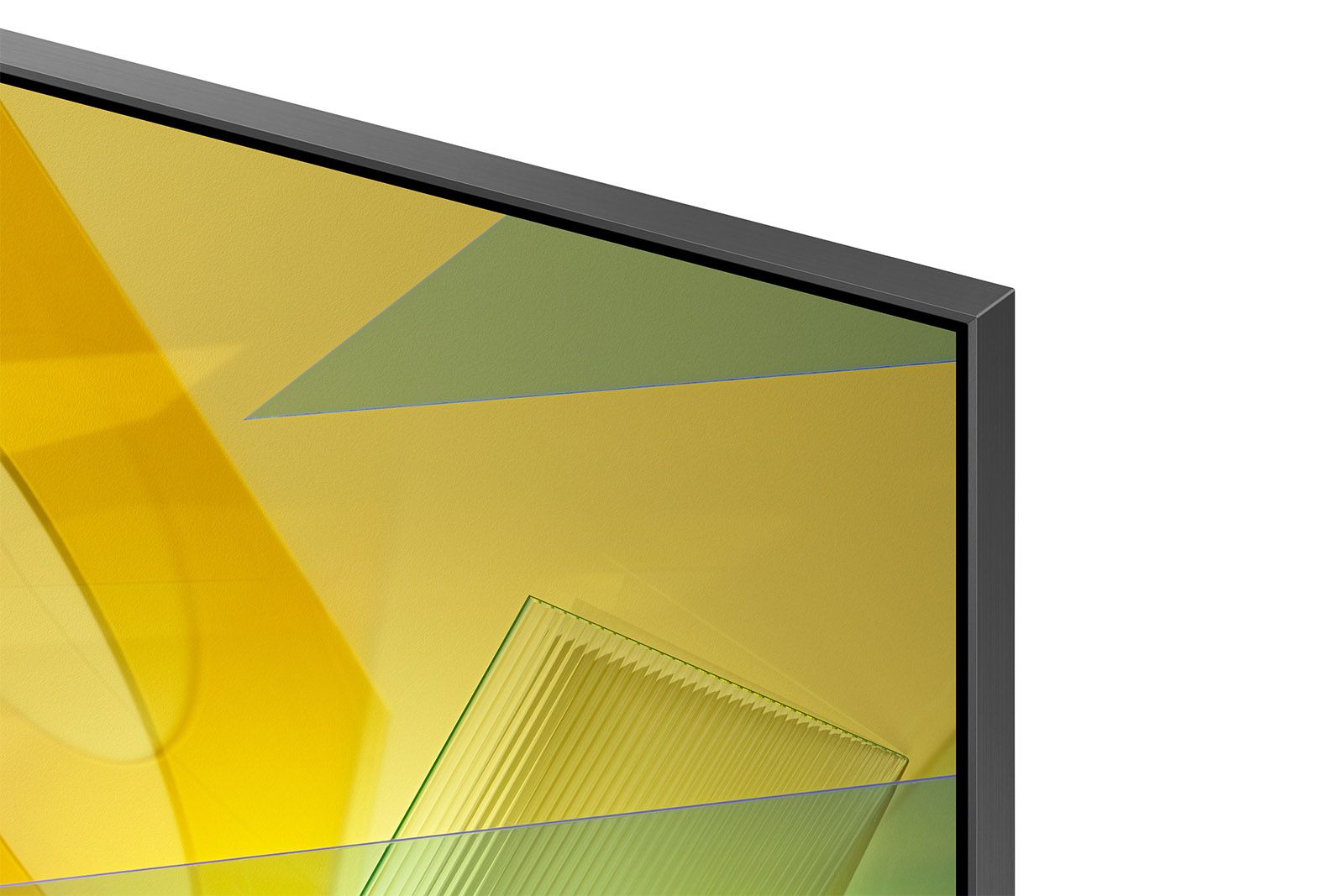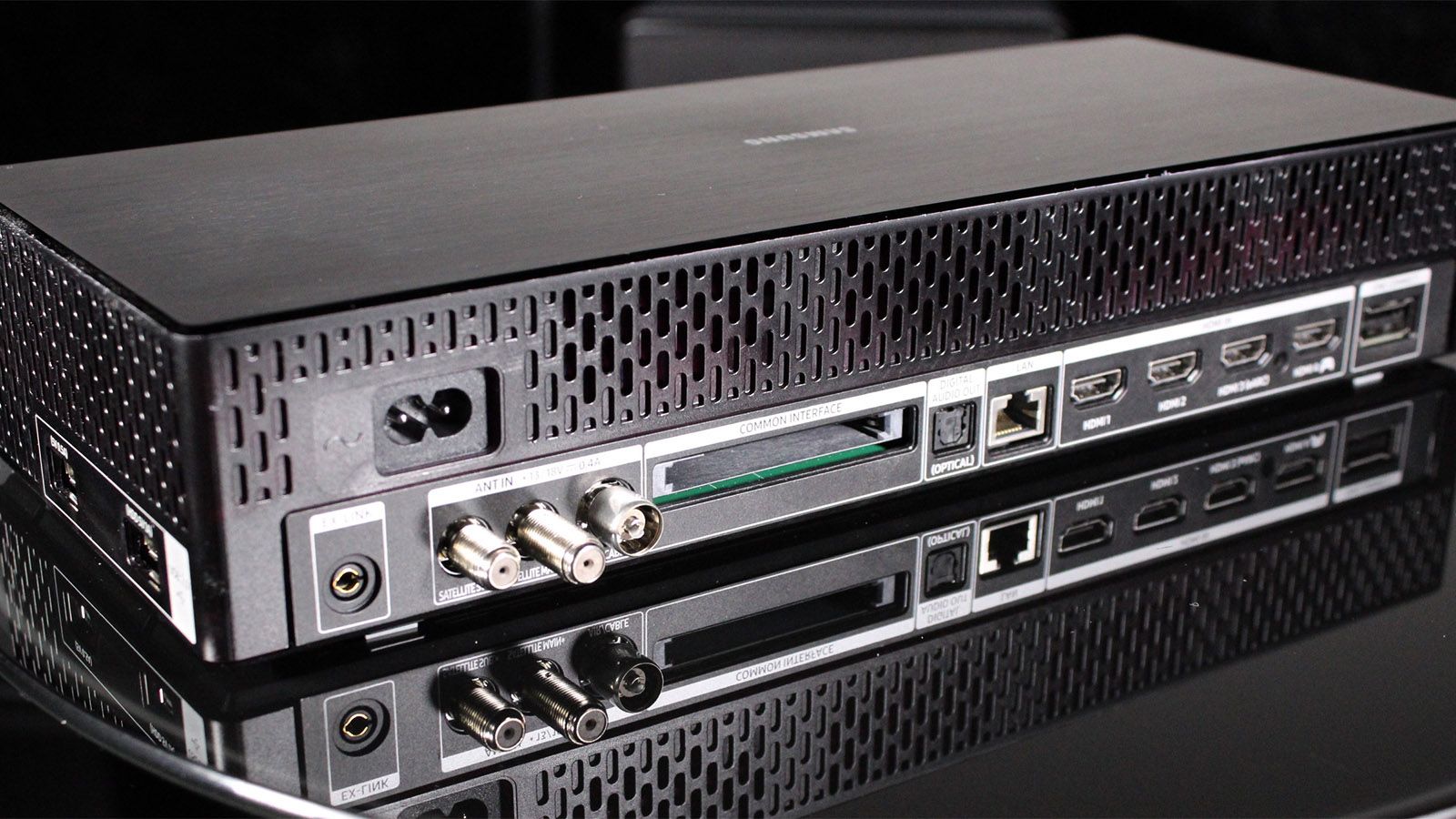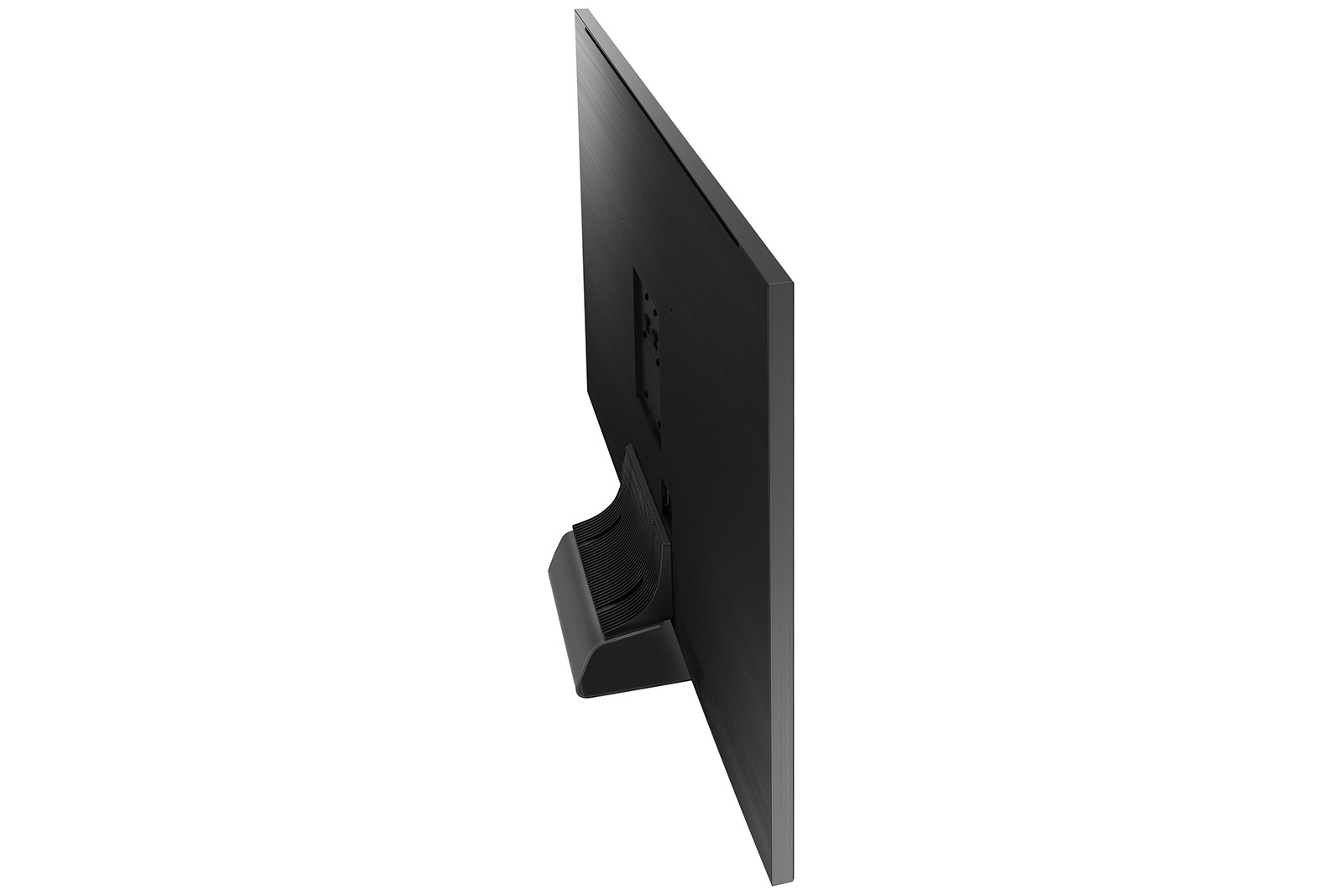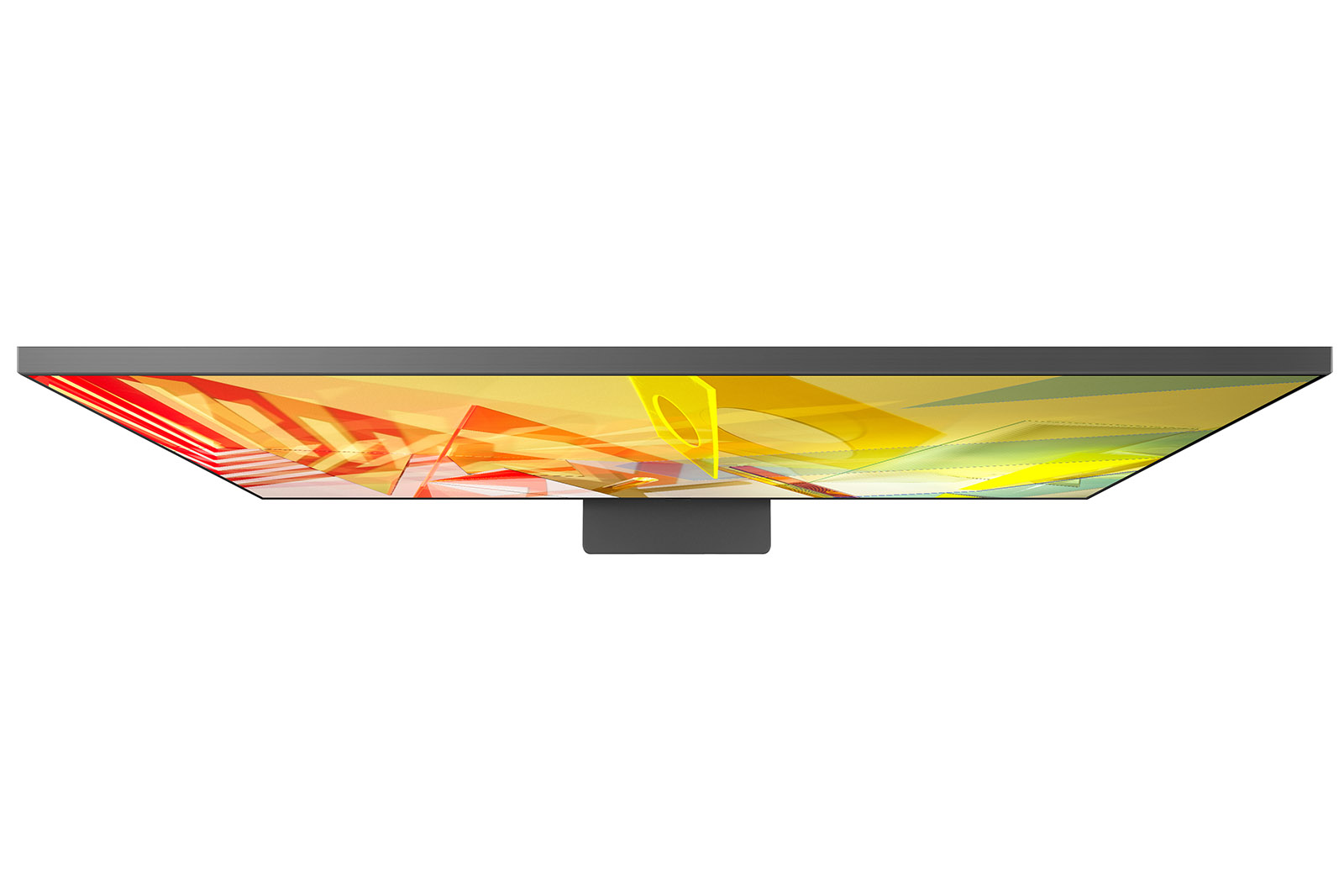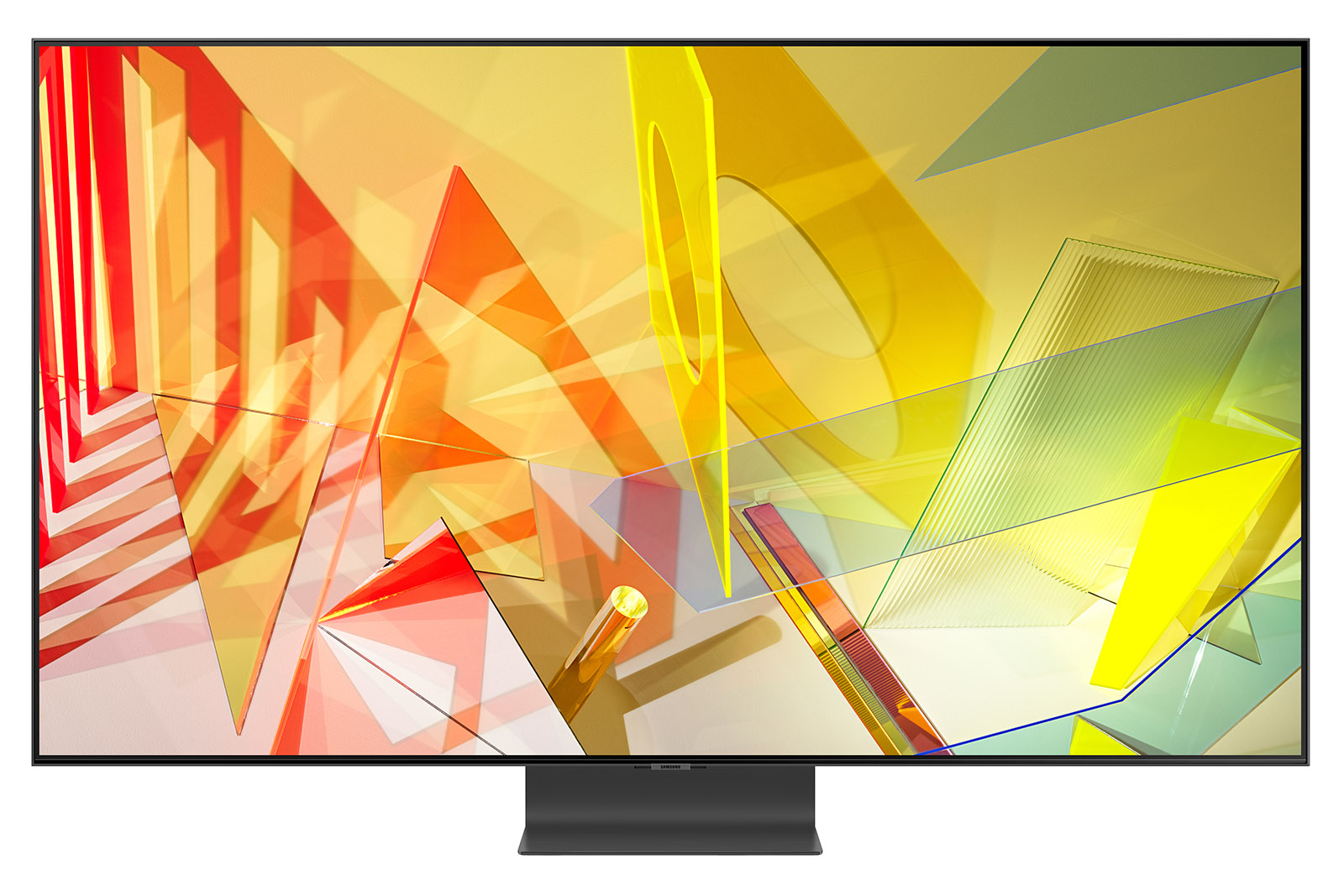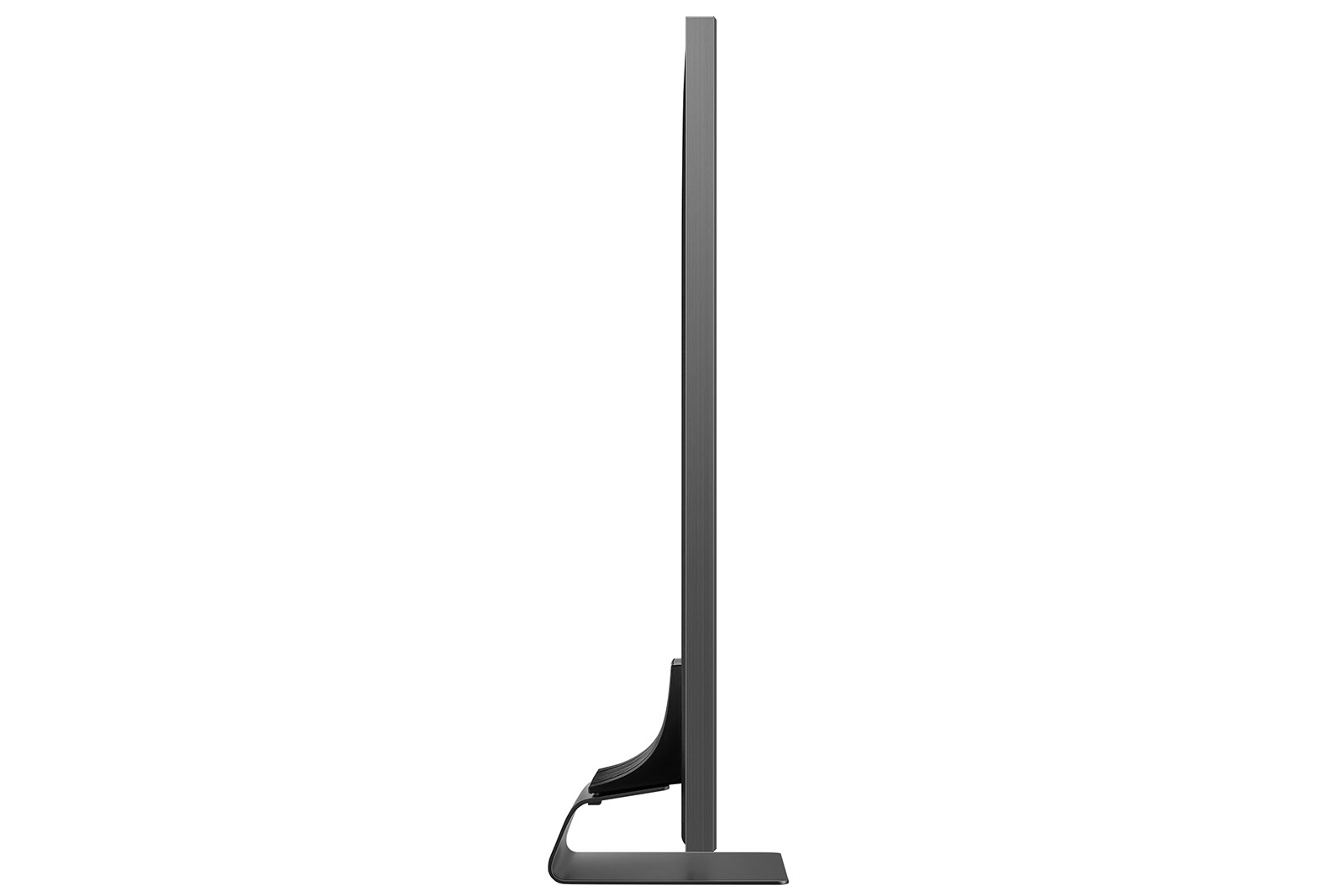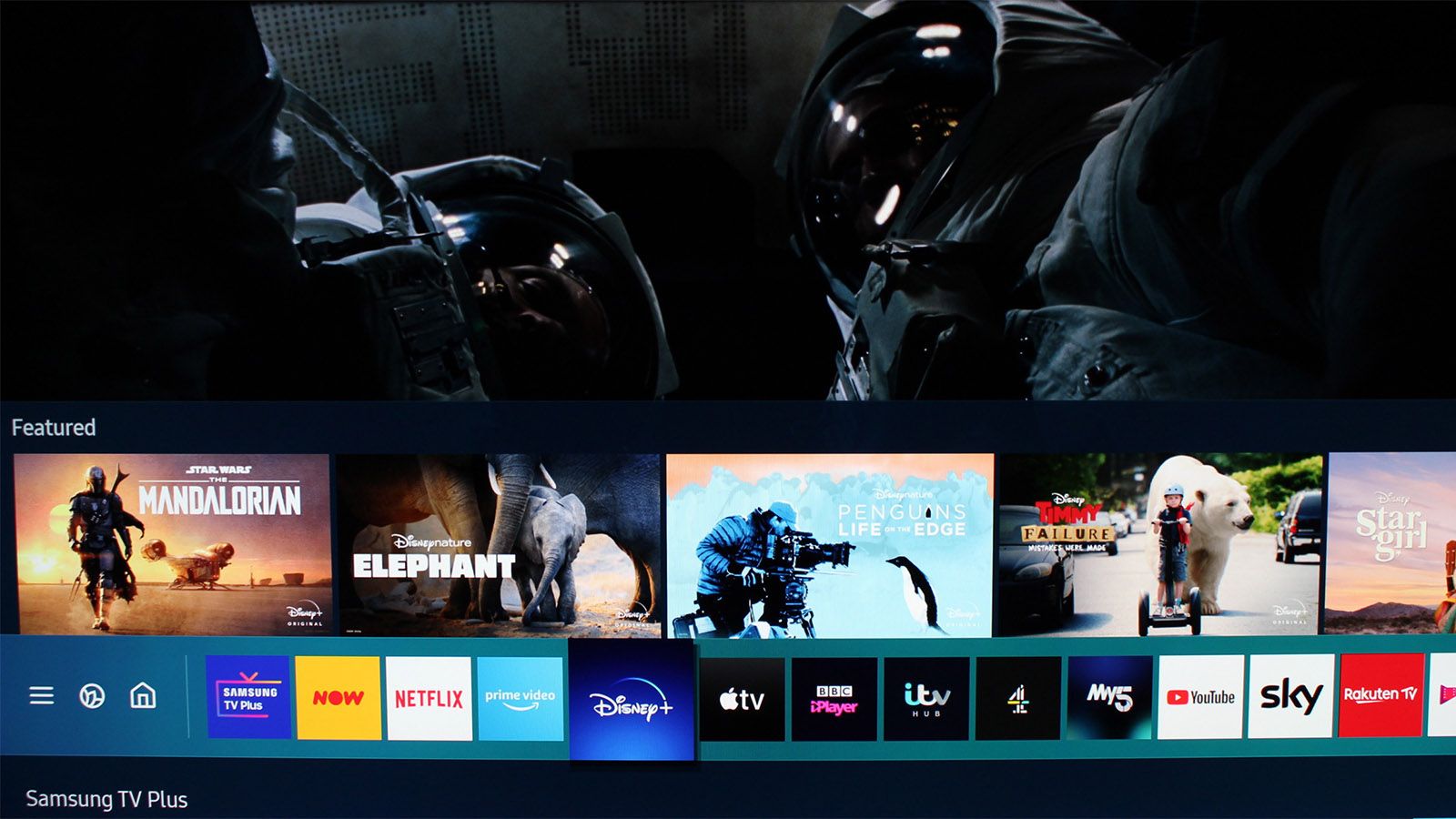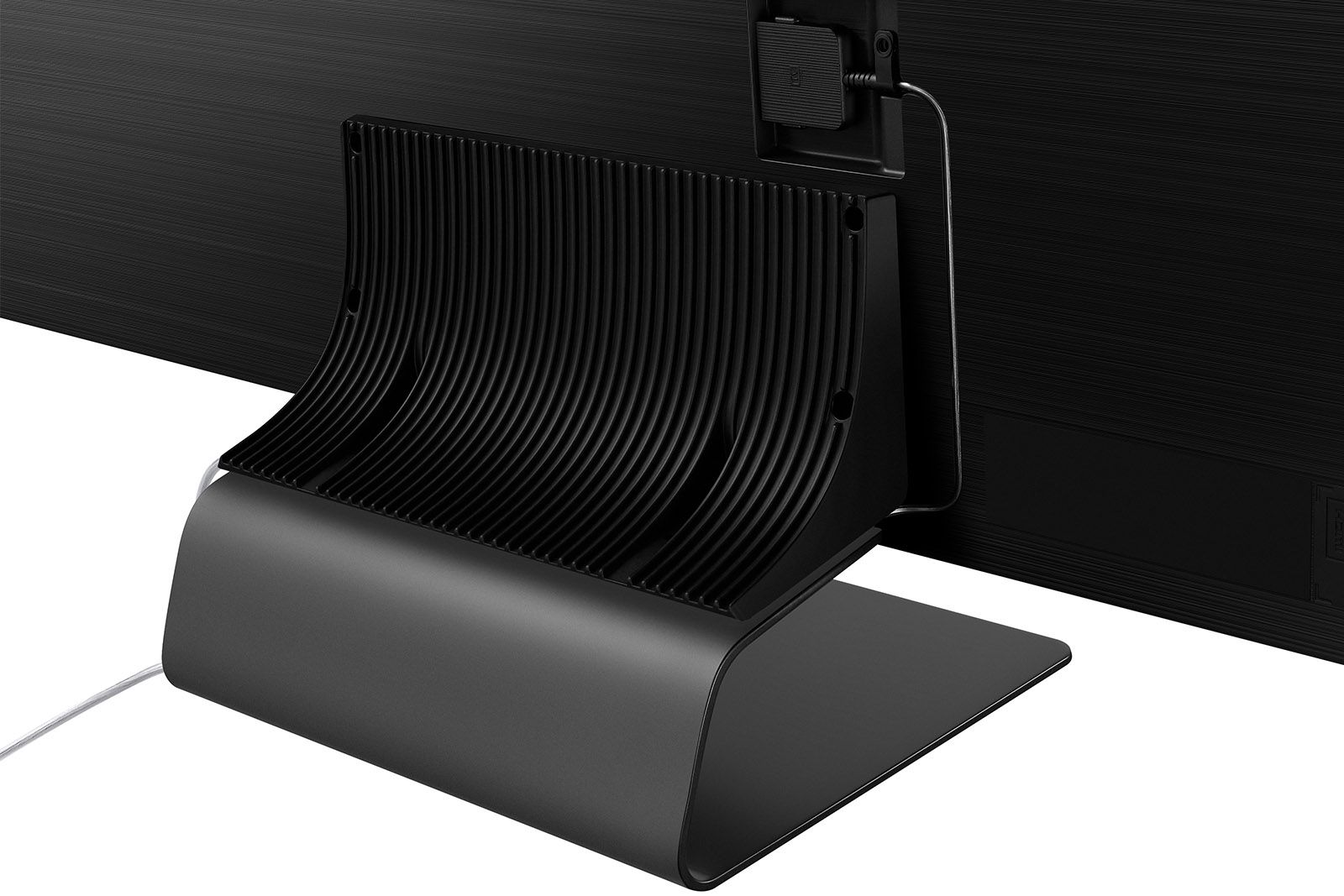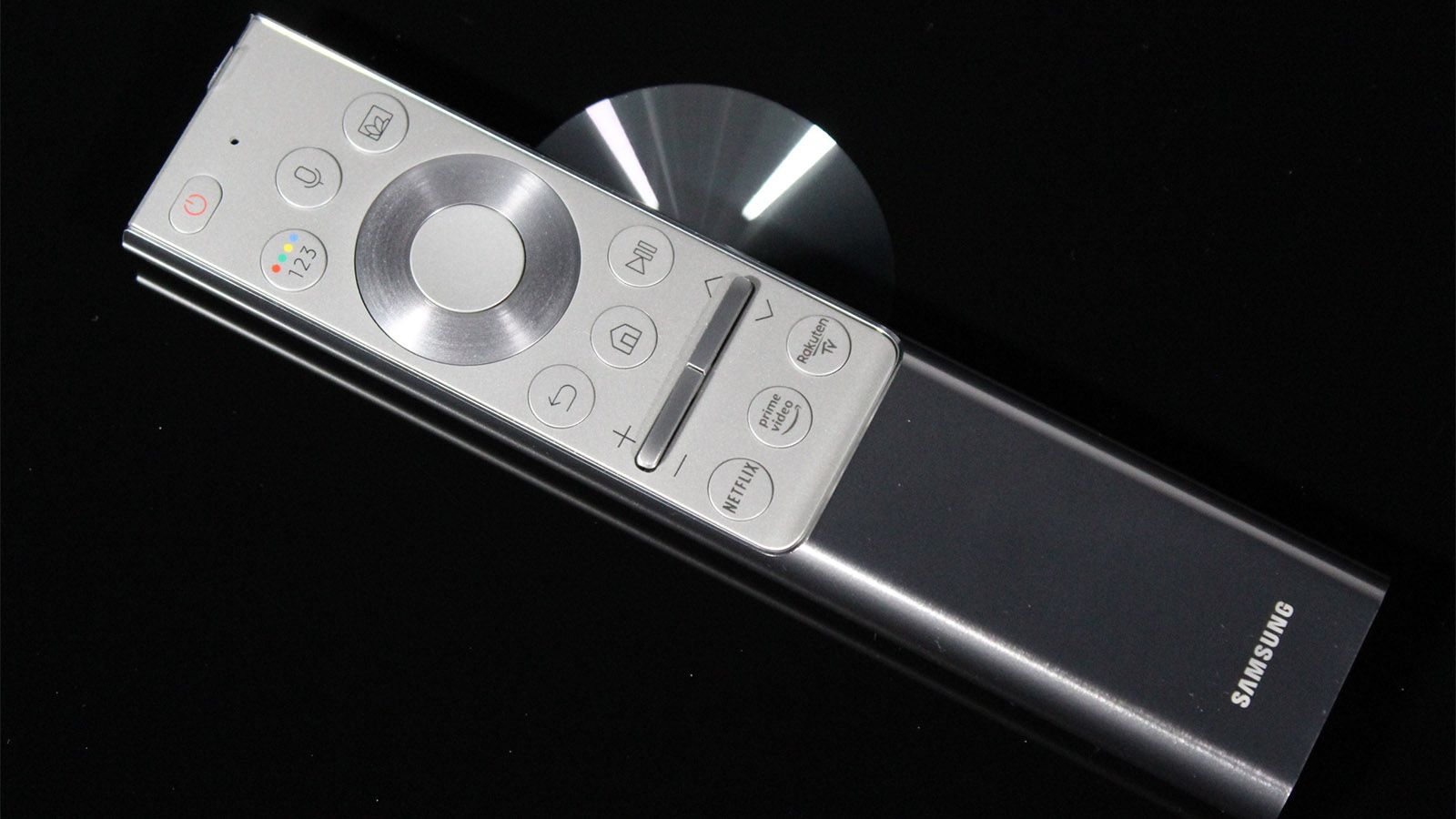Samsung's main focus may be on 8K tellies these days, but given the current lack of content at that resolution, many are just more interested in a 4K alternative. The Q95T represents the top of the company's QLED 4K line-up, while boasting many of the features found on the higher-end 8K models.
These features include a direct full-array backlight with local dimming, the latest AI-enhanced upscaling, an anti-reflection screen, Object Tracking Sound (OTS), gaming features, a One Connect box to keep cables out of sight, and the full Tizen OS with a comprehensive choice of streaming services.
Our quick take
The Samsung Q95T proves to be an excellent all-round 4K performer, offering the benefits of QLED brightness and colour and many of the features found in the higher-end 8K models. This TV delivers a fantastic picture with both standard dynamic range and HDR, and thanks to a host of gaming features and an incredibly low input lag, it's also ideal for hard-core gamers.
The inclusion of six speakers and Object Tracking Sound results in a TV that sounds really good, making for a nice change, while there are also useful features like eARC. In addition the smart platform is slick and responsive, plus it boasts every app you'll ever likely need. In fact the only real complaint is Samsung's continued refusal to embrace Dolby Vision.
The QT95 is a cost-effective choice for those not yet convinced by 8K. It is a downgrade on 2019's 4K flagship, but it still offers many of the features found in the higher-end 8K range, while delivering cracking pictures and including support for the next-gen of consoles - making it a great choice for gamers.
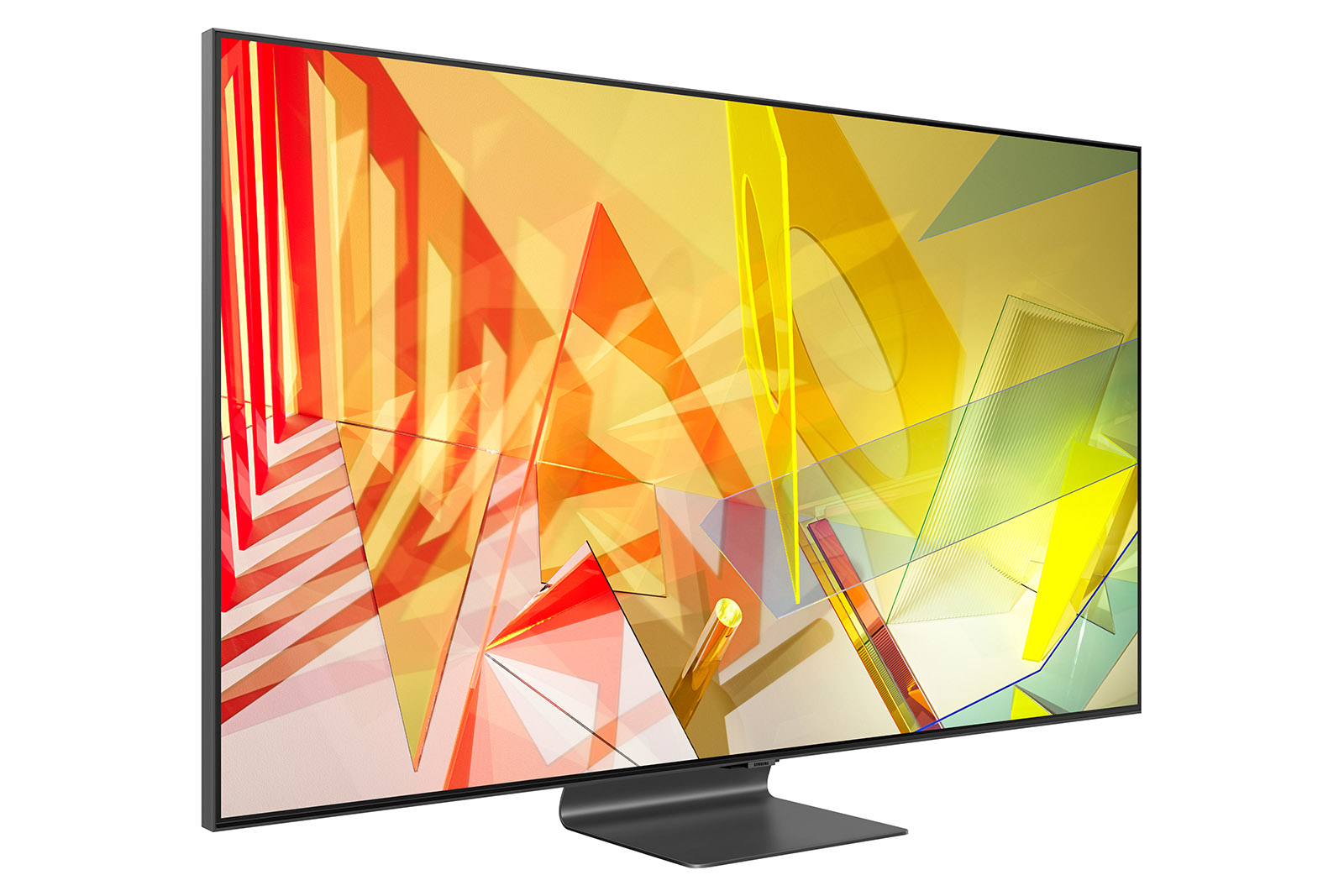
Samsung Q95T 4K QLED TV - 4.5 / 5
| FOR | AGAINST |
|---|---|
|
|
Design, connections and control
- One Connect Box
- Wi-Fi; Bluetooth; AirPlay 2
- Single fibre optic cable that includes power
- 4x HDMI inputs with eARC; 3x USB; Ethernet
The Samsung Q95T sports the company's 'boundless' design, with a 2mm wide frame around the top and side edges of the chassis, and a slightly wider frame along the bottom. It's impressively sleek, although not quite as cool as the 8K 'infinity' screen, where the image goes out to the edge.
Overall the QT95 is a stunning piece of industrial design, with a brushed metal outer edge, a textured rear panel, and an anti-reflection filter on the front. The build quality is excellent, and the whole set measures only 35mm deep, despite containing a direct full array LED backlight and six speakers.
The solid stand mirrors the panel's sleek styling, and is angled forward to create the illusion the image is elegantly floating in space. The stand is finished in carbon silver, measures 300 x 280mm, and there's 110mm of clearance if you're planning to use a soundbar.
If you'd rather wall-mount the Q95T, there's the optional ‘No-Gap' bracket, while the included One Connect box allows the screen to be connected by a single thin cable, making installation mess-free. The TV comes with a nearly-invisible 10m cable, but an optional 15m version is also available.
The One Connect box houses four HDMI inputs, one of which (HDMI 3) supports eARC (which you can read more about here). One of HDMI inputs is capable of handling 4K/120Hz, VRR (variable refresh rate) and ALLM (auto low-latency mode), making this TV a great choice for gamers – unless you're planning on buying both competing next-gen consoles.
There are also two USB 2.0 inputs, twin tuners for terrestrial and satellite broadcasts, a CI slot, an optical digital output, an ex link 3.5mm jack, and an Ethernet port. In terms of wireless connections, there's Wi-Fi, Bluetooth and support for Apple AirPlay 2.
The are two remotes: a basic black version and a sleek metal zapper with an ergonomic shape that makes it comfortable to hold and easy to use with one hand. There's a microphone for voice control, and direct access buttons for Netflix, Amazon and Rakuten TV.
Features: AI-enhanced imaging and next-gen support
- High Dynamic Range (HDR) support: HDR10, HLG, HDR10+
- Processing engine: Quantum 4K Processor with AI
- 100% of DCI-P3 and 1700nits of peak brightness
- Anti-reflection screen and Ultra Viewing Angle
The Samsung Q95T boasts the 2020 iteration of the company's Quantum Processor 4K. This uses AI-enhanced machine learning to deliver superior upscaling and image processing, as well as an Adaptive Picture mode to adjust the image on-the-fly – although the latter mode is best avoided in our opinion.
The Quantum Processor also analyses the audio signal and the TV's location in the room to optimise the sonic performance. There's Adaptive Sound+ (which Samsung describes as a real-time scene-by-scene analysis to identify sound type), along with Active Voice Amplifier for clearer dialogue, and Adaptive Volume that adjusts the volume based on content.
For 2020 Samsung has added Object Tracking Sound (OTS), which uses six speakers and 60W of amplification for a more immersive sonic experience. Along with the left and right speakers at the bottom, there are a pair of subs and additional speakers at the top for greater immersion.
There's support for high dynamic range, specifically HDR10 and HDR10+, with dynamic metadata designed to tailor the performance on a scene-by-scene basis. The Q95T also supports HLG (hybrid log-gamma), which is the new broadcast standard used by the BBC and others.
Samsung claims a peak brightness of 2,000 nits and 100 per cent coverage of DCI-P3 colour, but in our actual measurements the peak brightness topped out at 1,700 nits and the colour gamut reached 94 per cent of DCI-P3 – which is still really good, just not as claimed.
The Q95T includes a couple of features first introduced in 2019: an anti-reflection screen and Ultra Viewing Angle technology. The former is designed to reduce reflections from ambient light in the room, and works well, making this an effective TV for daytime viewing.
The Ultra Viewing Angle tech addresses an inherent limitation in the the VA panels that Samsung uses in its QLED TVs. This innovation significantly reduces the colour and contrast drop-off experienced as you view the TV at more extreme viewing angles, and proves highly effective.
The Q95T uses a direct LED backlight with Quantum Dot filters that produce brighter and purer colours, thus expanding the colour gamut. There's also local dimming, and while Samsung's algorithm is highly effective, we counted 120 independent zones, which is fewer than the previous model.
Samsung has also added a Filmmaker Mode, which is designed to deliver an image that represents the content creator's original intentions. It uses brightness and colour settings to match the industry standards, and turns off any unnecessary processing or frame interpolation.
Picture quality: An impressive all-rounder
The Samsung Q95T might not be quite as well-specified as the previous Q90R, but the performance remains impressive. The TV delivers a clean and detailed image regardless of whether you're watching standard dynamic range or HDR content, the black level delivery is solid, highlights are suitably bright, and colours pleasingly saturated.
The AI-enhanced image processing and upscaling is highly effective, even making standard definition content watchable. There are no obvious artefacts, although the lack of sharpness and clarity is obvious once you switch to the same programme in high definition. Working with higher resolution content, the processor is able to squeeze out every last pixel of detail.
When you feed the Q95T a 4K signal it's able to really shine, revealing a beautiful presentation that's bursting with fine detail, nuanced colours, and inky blacks. The local dimming is applied with remarkable skill, despite the reduced number of zones. As a result a dark show like The Haunting of Hill House remains clearly defined, and never descends into a morass of smudged greys.
Given its peak brightness this TV doesn't need to tone map 1,000 nits content at all, but does an excellent job of mapping 4,000 nits content, ensuring there is detail in both the shadows and the highlights. The local dimming algorithm also delivers bright highlights without any noticeable blooming, which enhances the overall experience.
The use of Quantum Dots allows for a superior colour volume, even at high brightness, which allows the Q95T to take full advantage of the wider colour gamut used in HDR. A great example is Guardians of the Galaxy Vol.2, which is a riot of saturated colours that the Samsung renders with wonderful levels of detail.
The Q95T also impresses when it comes to motion handling, and with Picture Clarity settings turned off any 24p content looks smooth, with no judder or unwanted artefacts. The motion settings apply frame interpolation, resulting in smoothing, which can be useful when viewing sports; while the LED Clear Motion setting uses black frame insertion, darkening the image, but improving the motion.
The built-in apps produce some superb 4K and HDR images, and in the case of Amazon Prime there's the added enhancement of HDR10+. The levels of detail and contrast are equally as impressive when watching Netflix, Apple TV+ and Disney+, and given all three of these apps use Dolby Vision it's disappointing that the Q95T doesn't support the format.
The Q95T offers numerous features aimed at the PS5 and Xbox Series X next-gen consoles. These include VRR (variable refresh rate) for syncing the TV's refresh rate with the console's frame rate, thus reducing tearing, along with support for 4K at 120Hz. Samsung's QLED TVs also support AMD Freesync, but the company is still in the process of certifying Nvidia G-Sync.
There's ALLM (auto low-latency mode) for automatically detecting a console and selecting the Game mode, resulting in a blink-and-you-miss-it input lag of just 9.4ms. However this can result in a degree of flicker, so the Game Motion Plus is designed to smooth out motion. This feature is effective, but in doing so it does increase the lag to 22.5ms – although that's still a very fast response time.
Finally there's a multi-view mode that allows you to watch two different sources simultaneously. You can adjust the size of the two picture-in-picture screens, change their relative position and choose which has audio priority. This feature isn't necessarily game-specific, but it's useful for gaming while watching YouTube tutorials.
Smart features: Comprehensive platform
- Tizen OS
- Alexa/Google Assistant/Bixby built-in
Samsung's smart platform is based around the Tizen operating system, and remains a slick, intuitive and easy-to-navigate interface. There's a launcher bar along the bottom and a second layer that provides faster access to the video streaming services.
When it comes to streaming apps there's a comprehensive choice, with Netflix, Amazon, Now TV, Rakuten, YouTube, and all the UK TV catch-up services. Samsung also supports Disney+ and AppleTV+, giving its platform a full house of video-related apps.
The Universal Guide helps you keep track of all this content by presenting it all via a user-friendly interface. It then uses AI machine learning to analyse your viewing habits and create a single 'For You' page with personalised content to suit your tastes.
New for 2020 is the Digital Butler, which allows for quick and easy connection by automatically scanning for nearby devices, detecting them and then representing all of them in an easy-to-understand graphical fashion.
The Q95T also offers the benefits of built-in smart assistants, with Samsung currently offering its own Bixby, along with Amazon Alexa. The company plans to add Google Assistant at some point, and you can even access Siri via Apple's AirPlay 2.
The only annoying aspect of Samsung's smart system is the requirement that you create a Samsung account when first setting-up the TV (assuming you don't already have one). This blatant attempt to tie you into the company's ecosystem is frustrating and time-consuming.
Sound quality: Object tracking sound
- Object Tracking Sound (OTS)
- Adaptive Sound+
- Q Symphony
The Q95T's integration of its six speakers is seamless, hidden behind a pattern of tiny holes in the outer edge of the TV cabinet. The sound quality is also impressive, with an open soundstage and plenty of power in the amplification.
When you first install the TV there's a sound optimisation feature that sends out test tones and measures them using built-in microphones. This allows you to optimise the sonic performance depending on whether the TV is stand- or wall-mounted.
Object Tracking Sound doesn't just involve more speakers, it also analyses the audio signal and uses sophisticated processing to align sounds with the location of specific images on the screen. It really works, creating an engaging experience with improved directionality and immersion.
There's no on-board Dolby Atmos decoding, but the Q95T can send Atmos back via ARC from its internal apps to a supporting soundbar or AV receiver. Since it also supports eARC, the Q95T can even pass lossless audio back via HDMI to a supporting soundbar or AV receiver.
If you have a 2020 Samsung soundbar, you can also benefit from Q-Symphony which provides audio synergy with the TV. This feature enables the speakers in the soundbar to work in conjunction with the top speakers on the Q95T, resulting in an increased sense of immersion.
Anything missing?
As with all of Samsung's TVs the Q95T doesn't support Dolby Vision – an HDR format that uses dynamic metadata to deliver a more refined experience. There is support for HDR10+, which is similar, but there's significantly more content available in Dolby Vision.
Unlike its predecessor the Q95T uses an 8-bit (FRC) panel, and it would appear Samsung is only using native 10-bit panels on its 8K line-up in 2020. While it's a shame that a high-end 4K model isn't 10-bit, the reality is you almost certainly won't notice any difference with actual viewing material.
While we're on the subject of Dolby, the Q95T also doesn't include on-board Atmos object-based audio decoding. It's a shame because with all those extra speakers for Object Tracking Sound, the results would be impressive. At least the Q95T can pass lossless Atmos back via eARC.
Samsung's smart platform is undeniably comprehensive, but it doesn't include Freeview Play. This isn't really an issue because all the UK TV catch-up services are present and correct, but it does mean these aren't integrated within the EPG (electronic programme guide).
To recap
A cost-effective choice for those not yet convinced by 8K. It is a downgrade on 2019's 4K flagship, but it still offers many of the features found in the higher-end 8K range, including AI-enhanced upscaling and Object Tracking Sound. It also delivers a cracking pictures and includes support for next-gen consoles - making it a great choice for gamers.

